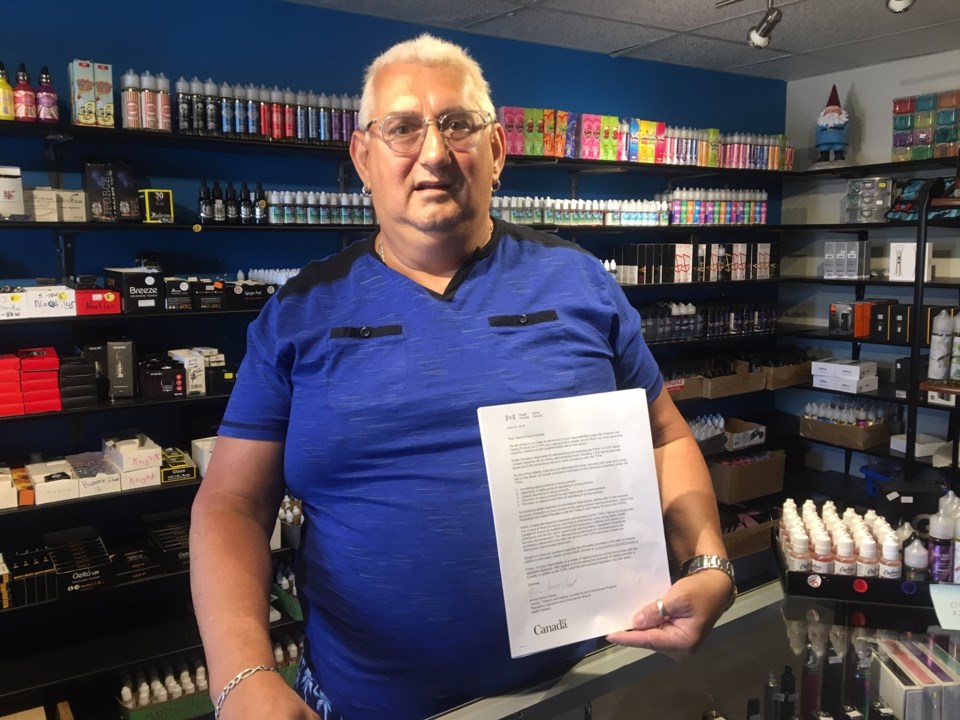A new study suggests the number of teens vaping has taken a dramatic jump, and Health Canada is cracking down on retailers and strengthening advertising restrictions as a result.
According to the British Medical Journal, the number of Canadian teens who say they vape is up by 74 per cent in the last two years.
The drastic increase in vaping rates among Canadian teens doesn’t come as a surprise to Philippe Leger, who runs a vape specialty store called Vape 1755 in Dieppe.
“It’s hard. It’s a trend, and they love it,” said Leger, adding that he won’t sell to youth under the age of 19.
But he says much like cigarettes and alcohol, teens who want to vape will find a way to get it.
“They find someone else to buy it for them but we won’t sell to any under age people in here” said Leger.
Health Canada is now taking steps to make sure it stays that way. According to an email statement from Health Canada’s Maryse Durette, the organization is currently working on tightening restrictions on in-store and online vape product advertising attractive to teens.
“Health Canada also consulted on other measures to address the recent trend of youth vaping, including examining the role of flavours, nicotine concentration and product design in making vaping products appealing to youth and non-smokers,” stated Durette.
She added that in mid-June, Health Canada sent out letters to vape retailers across the country reminding them that selling the product to underage youth carries stiff penalties.
Health Canada also plans to inspect 1,000 vaping specialty stores across the country in 2019 and 2020 convenience stores to ensure compliance. Those who don’t comply could face initial fines of up to $5,000 for a first offence and for subsequent offences, up to 50,000 dollars in fines.
Leger said is it a good way to keep retailers in line.
“If I pay $50,000, I might as well close the store down,” he said.
Durette said Health Canada is also moving toward requiring vaping products to carry health warning messages much like cigarettes. When and if those warnings will be in place is unclear.
But Mohammed Al-Hamdani, the director of health initiatives for the Lung Association, said the warnings helped to reduce smoking rates and should do the same when it comes to vaping.
“The more visible they are the more effective they will be as per the evidence from the tobacco control literature,” he said.
Al-Hamdani also suggests drastically increasing tax rates on vaping products and increasing the minimum age to 21 may help cut down on Canadian youth vaping rates.
- Global News
